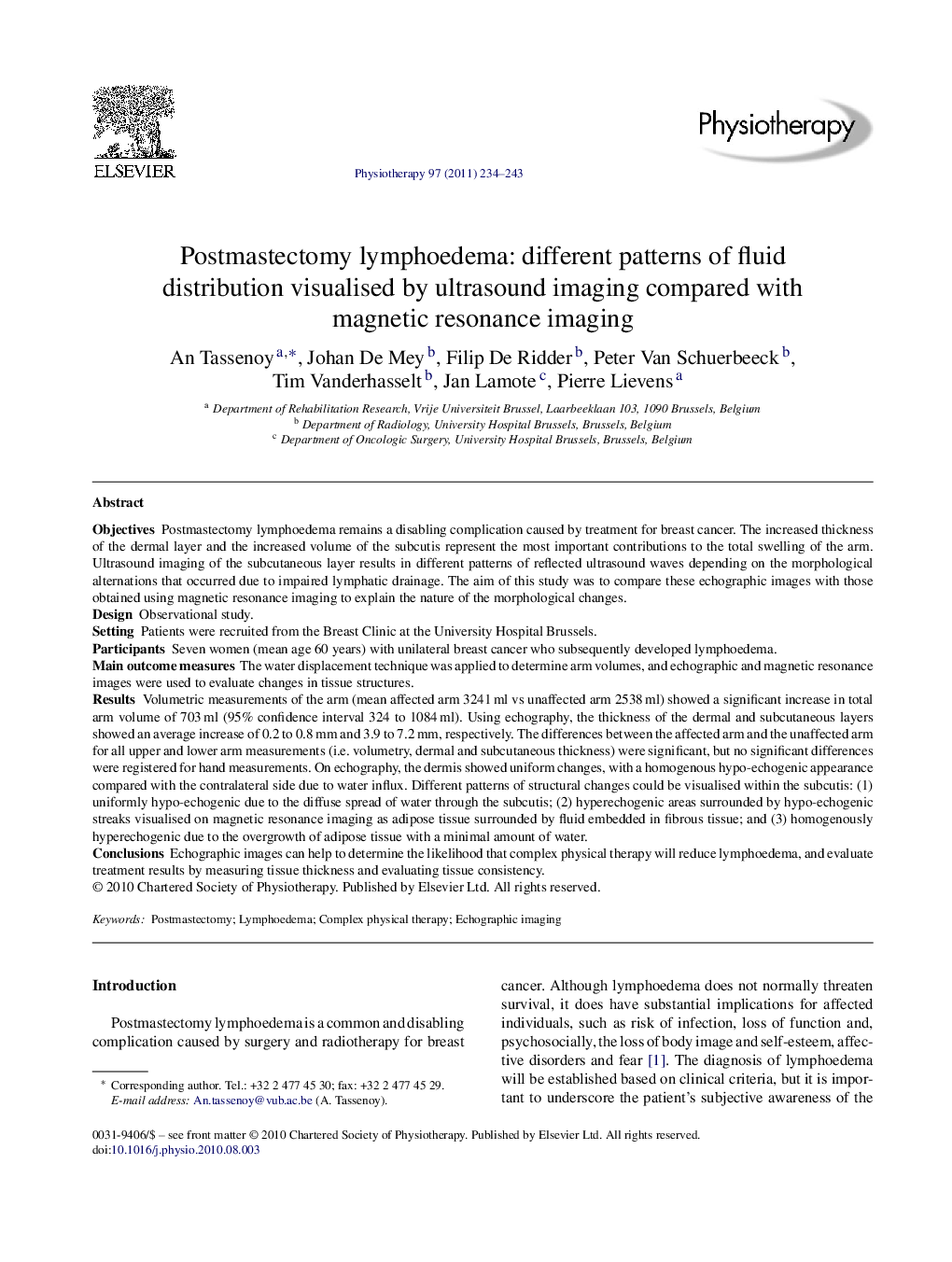| کد مقاله | کد نشریه | سال انتشار | مقاله انگلیسی | نسخه تمام متن |
|---|---|---|---|---|
| 2627470 | 1136078 | 2011 | 10 صفحه PDF | دانلود رایگان |

ObjectivesPostmastectomy lymphoedema remains a disabling complication caused by treatment for breast cancer. The increased thickness of the dermal layer and the increased volume of the subcutis represent the most important contributions to the total swelling of the arm. Ultrasound imaging of the subcutaneous layer results in different patterns of reflected ultrasound waves depending on the morphological alternations that occurred due to impaired lymphatic drainage. The aim of this study was to compare these echographic images with those obtained using magnetic resonance imaging to explain the nature of the morphological changes.DesignObservational study.SettingPatients were recruited from the Breast Clinic at the University Hospital Brussels.ParticipantsSeven women (mean age 60 years) with unilateral breast cancer who subsequently developed lymphoedema.Main outcome measuresThe water displacement technique was applied to determine arm volumes, and echographic and magnetic resonance images were used to evaluate changes in tissue structures.ResultsVolumetric measurements of the arm (mean affected arm 3241 ml vs unaffected arm 2538 ml) showed a significant increase in total arm volume of 703 ml (95% confidence interval 324 to 1084 ml). Using echography, the thickness of the dermal and subcutaneous layers showed an average increase of 0.2 to 0.8 mm and 3.9 to 7.2 mm, respectively. The differences between the affected arm and the unaffected arm for all upper and lower arm measurements (i.e. volumetry, dermal and subcutaneous thickness) were significant, but no significant differences were registered for hand measurements. On echography, the dermis showed uniform changes, with a homogenous hypo-echogenic appearance compared with the contralateral side due to water influx. Different patterns of structural changes could be visualised within the subcutis: (1) uniformly hypo-echogenic due to the diffuse spread of water through the subcutis; (2) hyperechogenic areas surrounded by hypo-echogenic streaks visualised on magnetic resonance imaging as adipose tissue surrounded by fluid embedded in fibrous tissue; and (3) homogenously hyperechogenic due to the overgrowth of adipose tissue with a minimal amount of water.ConclusionsEchographic images can help to determine the likelihood that complex physical therapy will reduce lymphoedema, and evaluate treatment results by measuring tissue thickness and evaluating tissue consistency.
Journal: Physiotherapy - Volume 97, Issue 3, September 2011, Pages 234–243